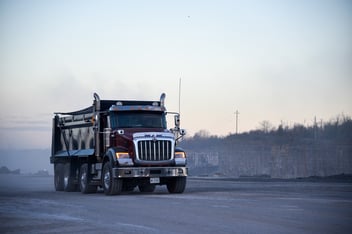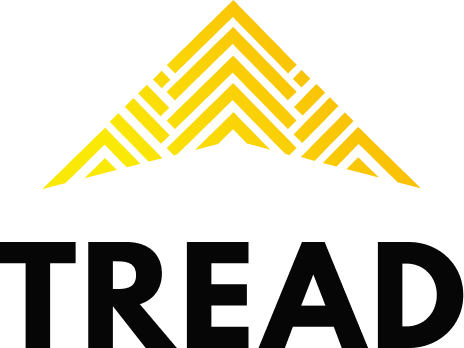How to Make Construction Site Safety Reports
There have been many advances in construction site safety; however, one in five deaths among U.S. workers comes from the construction industry. This type of statistic tells us there is still a lot of room for improvement when it comes to safety management.
Implementing a workplace safety program is essential to keeping workers—and your company—safe. In fact, penalties from the Occupational Safety and Health Administration (OSHA) for safety violations can cost between $13,000 to $136,000. Using a safety report for construction sites to regularly inspect the workspace is one of the most effective ways to maintain the safety of your employees and subcontractors and avoid heavy fines.
In this blog, we’ll cover safety reports, what to include in them, best practices for filling them out, and tips on improving the reporting process.
What is a construction safety report?
A construction safety report is a document used to inspect the safety measures put in place and carried out on a construction site. Safety inspectors record information related to a variety of measures outlined below, so that the general contractor can provide a safe work environment for its employees and subcontractors.
Construction safety reports are the most effective method of catching and countering unsafe habits and hazards on a job site.
How to make construction site safety reports
If you are looking to improve your construction site’s safety, creating a detailed construction safety report and inspection process is key to avoiding accidents. We’ve put together a list of common site hazards, and how to include them in your safety report.
The items listed below may vary depending on your specific construction industry standards, regulations set out by OSHA, and the project itself so be sure to follow your industry guidelines when finalizing your safety checklist.
- Fire prevention
- Electrical and utility
- Hand and power tools
- Heavy equipment
- Barricades and fencing
- Materials storage and handling
- Excavation and shoring
- Ladders
- Scaffolding
- Welding and cutting
- Personal protective equipment
- First aid
- Program administration
1. Fire prevention
This section will cover all things related to fire safety. It should look at fire extinguishers—if there are enough on site and if they are the right kind for the area or piece of equipment they’re in. It should also look for flammable liquids and if they’re being stored properly. Lastly, it should cover smoking rules and regulations—checking to see if the proper no smoking signs are posted and if those rules are being enforced.
2. Electrical and utility
This section of the safety report will look for anything related to electrical and utility safety. This includes checking to see if electrical dangers and hazards have been marked and clearly posted. Looking to see if drop cords are protected, if underground electrical and gas lines have been staked, and if electrical equipment has been grounded and locked out.
3. Hand and power tools
Small hand tools and power tools should not be overlooked in a safety inspection report. The tools should be examined to ensure handles are attached properly and free from cracks, cords are in good working order, and are grounded or double insulated. When not in use, are tools being stored safely and protected from unauthorized users? When they are in use, the safety inspector should also be looking to see if they are being used correctly and for the right job with mechanical safeguards in place.
4. Heavy equipment
All heavy equipment on a construction site should be included in safety inspection reports. Checklist items that should be included in this section include looking for operation manuals and inspecting the machinery brakes, signal lights, and alarms to see if they are working properly. Other safety checklist items should include watching to see if seat belts are being worn properly and tires are being choked (when necessary). The inspector can also refer to the inspection checklists for each piece of heavy equipment for this information.
5. Barricades and fencing
This section of the construction safety report should include safety of the overall site and surrounding areas. Safety inspectors should look to see if the construction site, roadways, and sidewalks are properly fenced off, as well as inspect any ground openings to see if these have been planked or barricaded. Lastly, they’ll need to watch for traffic control if the job site is interfering with the flow of traffic.
6. Materials storage, handling, and disposal
When inspecting materials storage, handling, and disposal, inspectors will need to look at how the materials are being stored and stacked, and how loads are lifted. When materials are being moved, inspectors will need to watch if the appropriate handles and holds are attached to the loads and if the proper PPE is being worn.
When examining the storage, they should be looking to see if non-compatible materials have been separated, if the area is free of clutter, debri, or other materials that could cause tripping, fires, or explosions, and if the stacking height complies with the restrictions for each particular material. They should also check hydraulically bound materials to see if they are on racks and secured by stacking, blocking, or interlocking.
7. Excavation and shoring
Excavation and shoring should not be excluded from a workplace safety inspection and report. The most important things to look for in this section include proper shoring for soil and depth while considering adjacent structures, checking to see if the necessary ladders or ramps are present along with excavation barricades, and watching for equipment near the edge.
8. Ladders
18% of all workplace fatalities are the result of falls from heights—this includes falls from ladders. To avoid this, construction companies should include ladder inspections as part of their health and safety procedures. Here safety inspectors should examine ladder condition, use, expansion above the landing, and security measures in place to prevent slipping, sliding, or falling.
9. Scaffolding
Scaffold-related incidents result in about 60 deaths and 4,500 injuries each year. During the health and safety inspection, officers should be looking at the condition of the scaffolding equipment, whether it’s secured to the structure, if guardrails, boards, and planking cleats are in place and that workers are properly protected from any falling objects.
10. Welding and cutting
If applicable, this is where the inspector would check to see if screens and shields are in place, if electrical equipment is grounded, if compressed gas cylinders are secure and upright, if proper PPE is being utilized, if fire extinguishers are immediately available within the vicinity, and if the welding cables are in good condition.
11. Personal protective equipment
In this section, safety officers need to inspect if the proper PPE is available and being used. This includes hard hats, gloves, steel toe footwear, eye protection, ear protection, safety belt, lanyards, respirators, and masks. Fall protection should also be noted in this section.
12. First aid
Every construction site will need to have a first aid kit present. Part of the inspection should be to check the kit to make sure it is adequately stocked. The required kits will vary depending on your location, project, and industry standards but at the least, things like gauze, bandages, rubbing alcohol, hydrogen peroxide, medical tape, scissors, rescue blankets, and eye washing supplies should be on hand at all times.
13. Program administration
Lastly, an area that gets overlooked on many health and safety checklists is basic program administration. This includes things like OSHA, emergency, and hazard postings and signage, lighting, and sanitation.
How to best fill out a construction safety report
The best way to fill out a safety report is by filling out every section thoroughly and in detail. Start by including the basic information, such as the date, project name, location, and the name of the inspector.
Document all safety risks and hazards as soon as they are noticed and use photos or videos to support your findings. The location of the safety issue should be clearly listed in the report.
Classify hazards from highest to lowest. Having a hazard rating can help prioritize safety issues that need to be addressed. The document should also provide solutions and persons responsible to mitigate the issue and restore a completely safe work environment. Lastly, collect the site supervisor or superintendent’s signature to sign off on the report once it is complete.
How to establish a system for safety reporting on a construction site
Establishing a system for safety reporting on a construction site will vary between companies and projects. Site supervisors should always perform an informal inspection when on site. On average, this means once a week. Safety inspectors will conduct a more thorough and formal inspection during their visit—typically once a month.
Once an infraction is reported, it goes to the project manager or site superintendent to correct the issue, provide a safe work environment for everyone involved, and ensure injuries and accidents do not occur.
Should construction safety reports be digital?
Digital construction safety reports are ideal. For years, companies have used pen and paper on a clipboard to conduct safety inspections and document their safety reports. This method provides some information but leaves a lot of room for error. Paper can get lost, writing can be illegible, and so on.
Should an incident occur on site, your company will want accurate historical safety documentation—and so will the Workers’ Compensation Board (WCB) and any other parties involved.
The benefits of digital safety reports include:
- Accurate, real-time data
- Legible information
- Digital signatures
- Compatibility with photos and videos
- Secure storage so information never gets lost or goes missing
- Centralized location for data so everyone involved can access it at anytime
- Effortless data comparison for reporting and forecasting
- Streamlined usability for HR, insurance, WCB, medical staff, police, etc.
- Increased productivity and processing
Digitizing your safety reports is the first step to creating a safer construction site. It is also important to look at other avenues where safety could be enhanced.
Tread focuses on the safety of your drivers and their trucks. When materials are being moved on and off site, Tread’s platform allows managers to see the location of their trucks in real-time and collect data on driver behavior that can help towards your overall workplace safety program.
Request a demo to learn more about how Tread can make your site a safer place for your drivers and your workers.
Read On

9 truck driver safety meeting topics to cover
Safety doesn’t happen by accident. It is an initiative that requires a commitment to education and...

Construction Daily Report Template [Free Download]
Construction projects involve a number of moving parts and rely on many elements to run smoothly....

6 Benefits of Construction Material Management
Money doesn’t grow on trees, and construction materials don’t appear out of thin air either....

